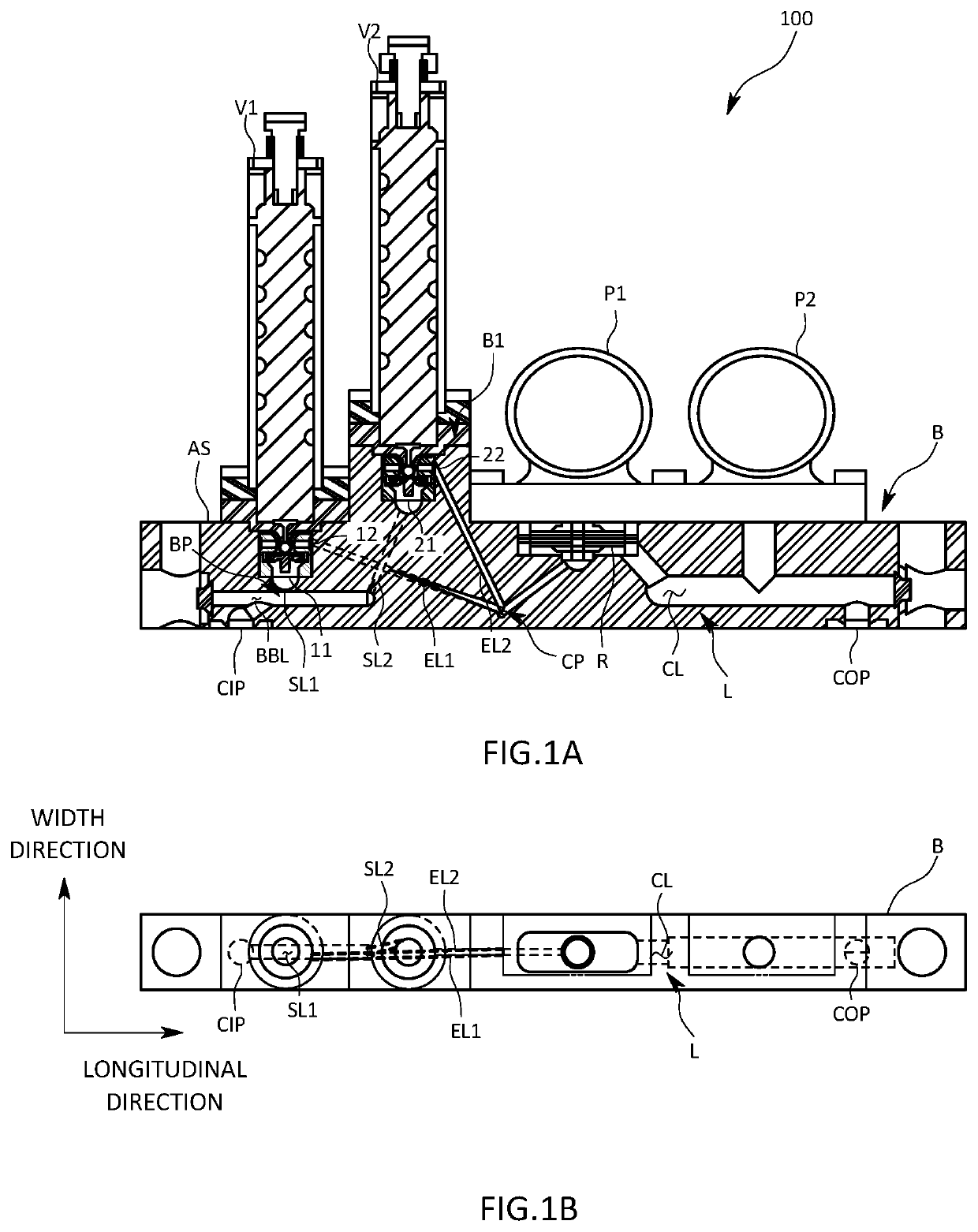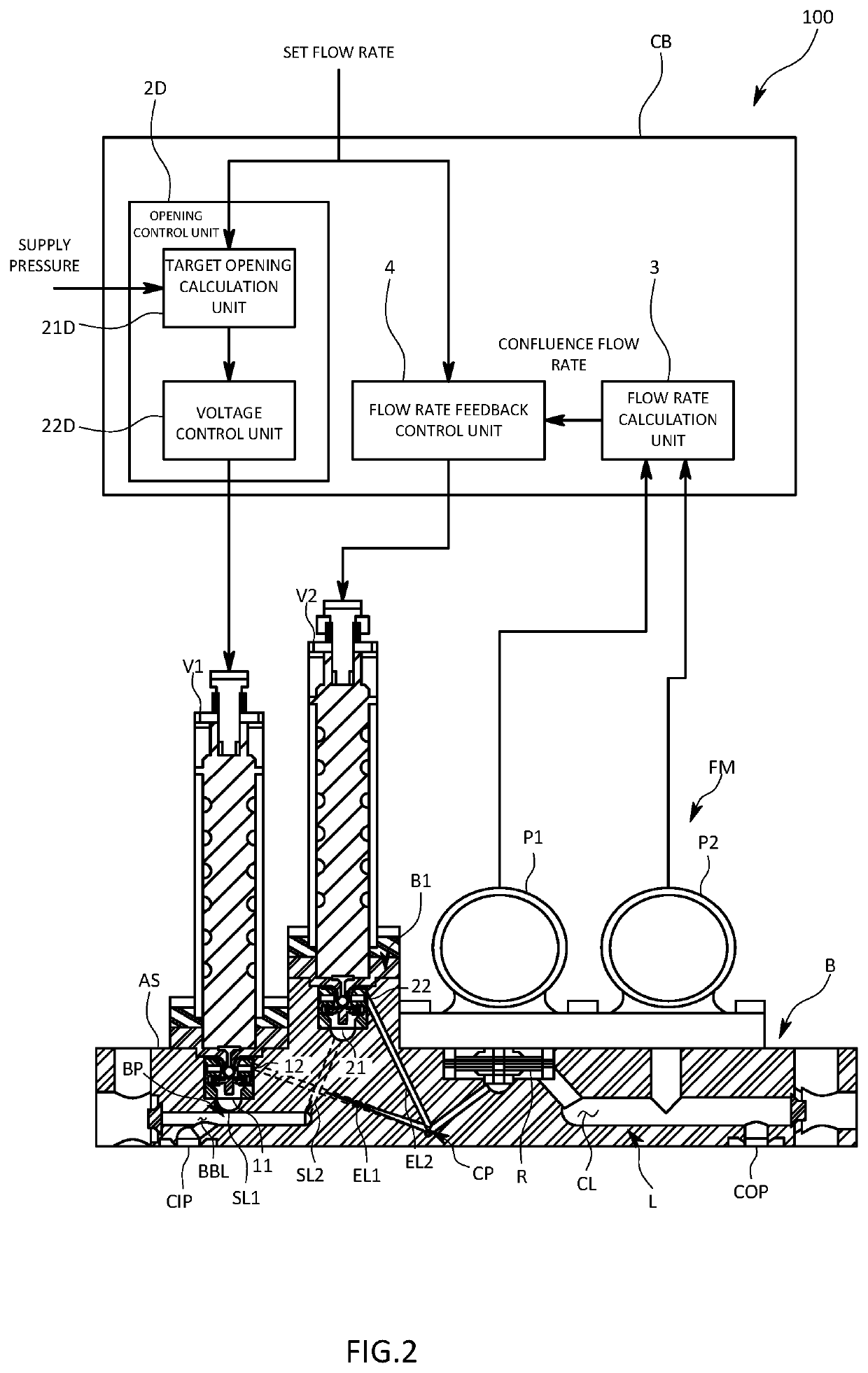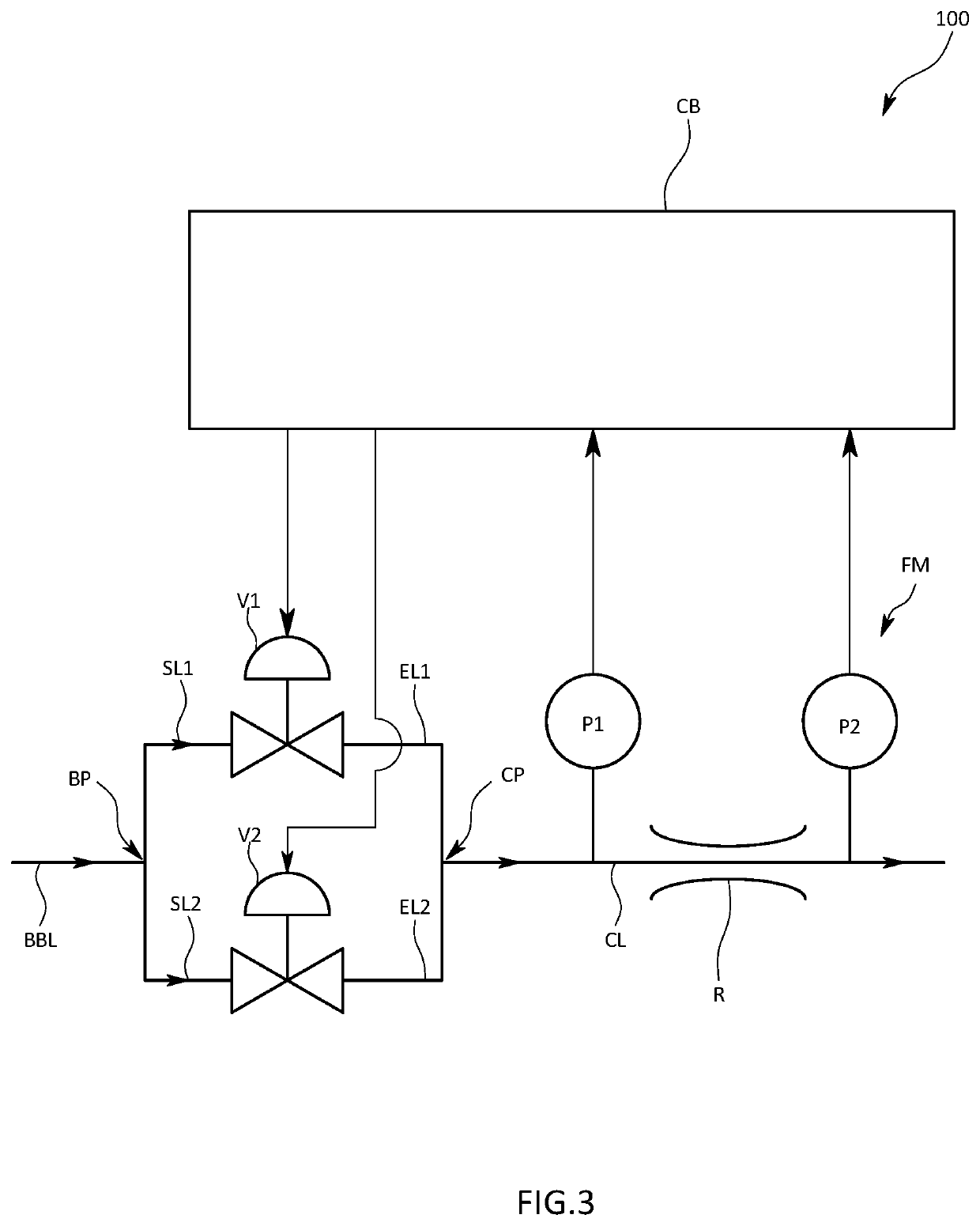Fluid control apparatus
a control apparatus and fluid technology, applied in valve housings, process and machine control, instruments, etc., can solve the problems of difficult to reduce the size of the mass flow controller, and achieve the effect of increasing the maximum flow rate and reducing the width of the block
- Summary
- Abstract
- Description
- Claims
- Application Information
AI Technical Summary
Benefits of technology
Problems solved by technology
Method used
Image
Examples
first embodiment
[0034]A fluid control apparatus 100 will be described with reference to FIGS. 1A to 3.
[0035]The fluid control apparatus 100 is used, for example, in a semiconductor manufacturing process, to supply fluids, or specifically various types of gases, to a chamber at a desirable set flow rate. A gas supply system is formed typically by arraying multiple fluid control apparatuses 100 side by side in the width direction.
[0036]As illustrated in FIGS. 1A, 1B, and 2, the fluid control apparatus 100, which is elongated in the longitudinal direction, includes a block B, a first control valve V1, a second control valve V2, a flow rate sensor FM, and a fluid controller CB. The block B has an internal flow channel L formed inside through which a gas flows from one end to the other. The first control valve V1 and the second control valve V2 are mounted on the block B. The flow rate sensor FM is a pressure sensing device that measures the flow rate of the confluent gas that has passed through the fi...
second embodiment
[0058]The fluid control apparatus 100 has such a structure that the valve plugs and the valve seats of the first control valve V1 and the second control valve V2 are not inserted in the block B and that the first control valve V1 and the second control valve V2 can be detached individually from the block B.
[0059]More specifically, the first control valve V1 includes a first valve block VB1 in which a valve plug and a valve seat are formed. The bottom surface of the first valve block VB1 is attached to the mounting surface AS of the block B, and the first control valve V1 thereby communicates with the internal flow channel L. The bottom surface of the first valve block VB1 is referred to as a connection surface CS. The first inlet 11 through which the fluid or the gas flows in and the first outlet 12 through which the gas flows out open at the connection surface CS. As illustrated in FIG. 4A, when the connection surface CS is attached to the mounting surface AS, the first inlet 11 i...
third embodiment
[0065]The fluid controller CB of the third embodiment includes a synchronization control unit 5 that controls the first control valve V1 and the second control valve V2 to change the opening in synchronization with each other.
[0066]The synchronization control unit 5 applies the same voltage to the first control valve V1 and to the second control valve V2 so as to decrease the deviation of the confluence flow rate, which is measured by the flow rate sensor FM, from the set flow rate. Here, the first control valve V1 and the second control valve V2 are valves of the same type and size. Accordingly, application of the same voltage causes these valves to open substantially to the same degree. The synchronization control unit 5 is configured to change the voltage applied to each control valve in accordance with the deviation of the measurement results from the set flow rate in such a manner that substantially the same voltage is applied to each control valve at any given time. For exampl...
PUM
 Login to View More
Login to View More Abstract
Description
Claims
Application Information
 Login to View More
Login to View More - R&D
- Intellectual Property
- Life Sciences
- Materials
- Tech Scout
- Unparalleled Data Quality
- Higher Quality Content
- 60% Fewer Hallucinations
Browse by: Latest US Patents, China's latest patents, Technical Efficacy Thesaurus, Application Domain, Technology Topic, Popular Technical Reports.
© 2025 PatSnap. All rights reserved.Legal|Privacy policy|Modern Slavery Act Transparency Statement|Sitemap|About US| Contact US: help@patsnap.com



